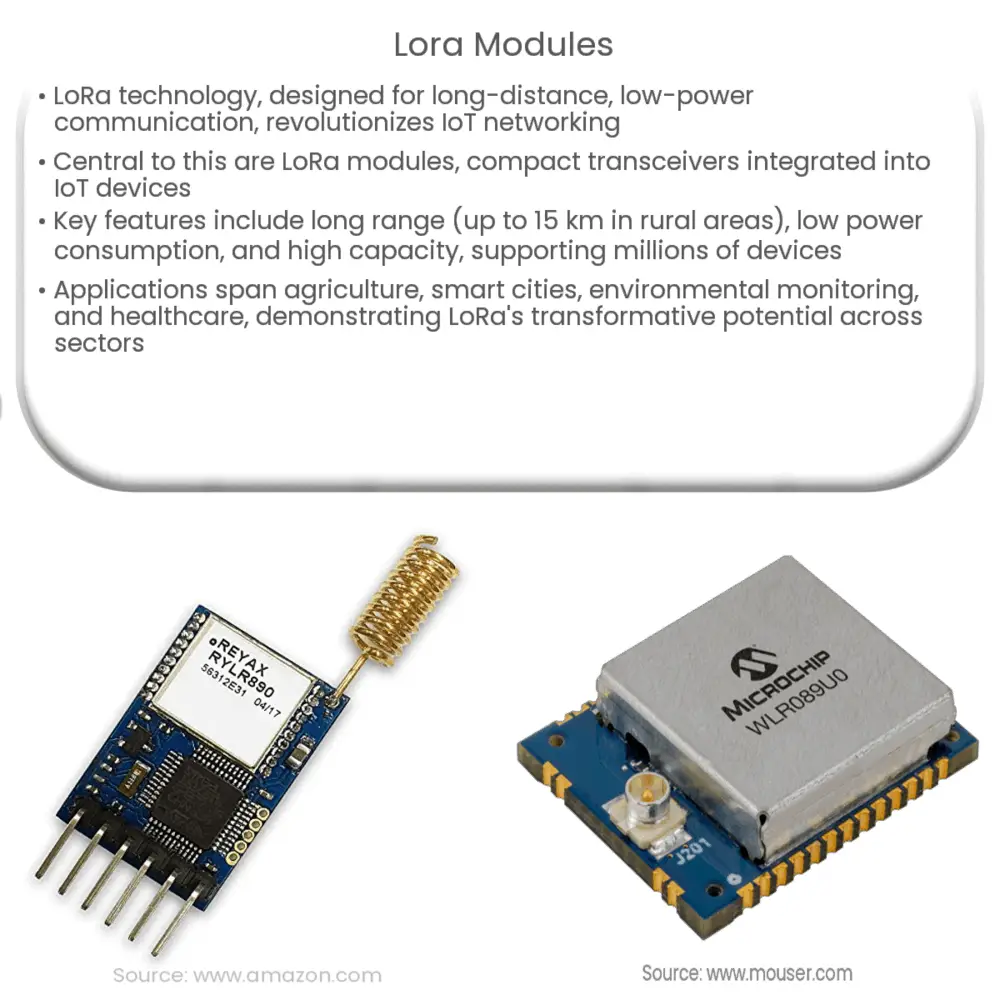Explore the world of LoRa Modules, their key features, operation, applications, and potential to revolutionize IoT.

Introduction to LoRa Modules
LoRa is a revolutionary technology that stands for Long Range, and it is designed specifically for low-power consumption, enabling long-distance communication of data wirelessly. This technology has brought a new wave in the domain of Internet of Things (IoT), providing an excellent base for building IoT networks.
At the heart of LoRa technology are the LoRa modules. These modules are the key components that make up a LoRa network, allowing devices to connect and communicate over long distances.
Understanding LoRa Modules
LoRa modules are essentially a kind of transceiver, a device that both transmits and receives radio signals. They are usually compact and are integrated into IoT devices to enable these devices to send and receive data over a LoRa network.
Key Features of LoRa Modules
-
Long Range: LoRa modules can transmit data over distances of up to 15 kilometers in rural areas and up to 5 kilometers in urban areas.
-
Low Power: They are designed to be extremely power-efficient, making them ideal for battery-powered devices.
-
High Capacity: LoRa networks can support millions of devices, making them perfect for large-scale IoT deployments.
Working of LoRa Modules
The operation of a LoRa module is based on spread spectrum modulation, which is highly resistant to interference and can still decipher signals even under unfavorable conditions. The spread spectrum modulation technique uses a wider band of the electromagnetic spectrum to transmit data, improving the reliability and range of data transmission.
When a LoRa-enabled device wants to send data, it communicates with the LoRa module, which then converts the data into a suitable format for wireless transmission. This data is then sent over the airwaves to a LoRa gateway.
Similarly, when a device needs to receive data, the process is reversed. The LoRa gateway transmits the data, the LoRa module receives it, and then converts it back into a format that the device can understand.
Applications of LoRa Modules
LoRa modules have a wide range of applications due to their unique features. They are used in various sectors such as agriculture, smart cities, environmental monitoring, healthcare, and many more. The ability to communicate over long distances without needing a lot of power makes them a preferred choice in remote and hard-to-reach areas.
Use Cases of LoRa Modules
Let’s delve deeper into some specific use cases of LoRa modules in various sectors.
-
Agriculture: In agriculture, LoRa modules are used in IoT devices for remote monitoring of soil moisture levels, weather conditions, and crop growth. This information can help farmers make more informed decisions, ultimately leading to increased productivity.
-
Smart Cities: In smart cities, LoRa modules are used in various IoT applications such as smart metering, waste management, and street lighting. These applications can lead to significant cost savings and improved quality of life for city residents.
-
Environmental Monitoring: LoRa modules can be used in devices that monitor air and water quality. The long-range and low-power capabilities of LoRa make it ideal for monitoring remote or inaccessible areas.
-
Healthcare: In the healthcare sector, LoRa modules can be used in wearable devices for remote patient monitoring. This allows for continuous monitoring of patients’ health parameters and early detection of potential health issues.
Conclusion
In conclusion, LoRa modules are an integral part of the rapidly growing field of IoT. They offer a unique combination of long-range, low-power, and high-capacity communication, making them ideal for a wide range of applications. As the demand for IoT devices continues to increase, we can expect to see even more innovative uses for this technology.
Whether it’s helping farmers increase their crop yields, making cities smarter and more efficient, monitoring the environment, or improving patient care, the impact of LoRa modules is far-reaching. Their potential to transform various sectors and improve lives is immense, and we are just beginning to scratch the surface of what this technology can do.

